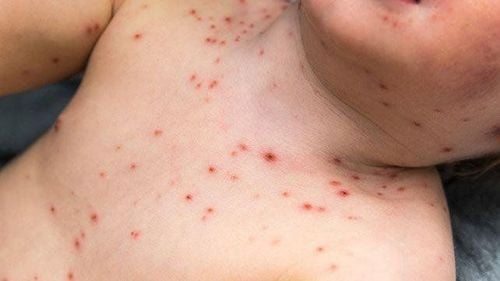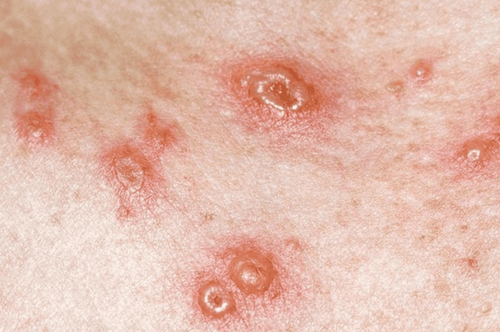While chickenpox is typically a benign infectious disease, improper treatment may lead to serious complications. It’s essential to pay close attention when the chickenpox spots turn opaque white.
1. What is Chickenpox?
Chickenpox is a contagious disease caused by the Varicella zoster virus. It spreads easily from person to person through skin contact, touching blister fluid, respiratory droplets, or sharing personal items.
Anyone, particularly children, may contract chickenpox, which peaks in outbreaks during the spring and summer. Initially, patients develop red rashes that gradually enlarge into fragile blisters filled with clear fluid. With appropriate care, chickenpox usually heals within 10 to 12 days, but complications may arise. A notable concern is when chickenpox spots turn opaque white, which is a warning sign of a secondary infection.
2. What Does it Mean When Chickenpox Spots Turn Opaque White?
Recognizing the symptoms of chickenpox is crucial. One of the primary signs of a secondary infection is when chickenpox spots change from clear to opaque white. This condition may prolong the duration of the illness, requiring better care and rest for quicker recovery and to avoid further health issues.
Moreover, if the spots dry and heal while remaining opaque, they may leave concave (pitted) scars, which may be aesthetic concerns if they appear on the face.
Additionally, opaque white spots indicate that a secondary infection could significantly impact health. For severely malnourished individuals, this infection may lead to complications such as skin ulcers or even necrosis. Other possible severe outcomes from a secondary chickenpox infection include pneumonia, otitis media (ear infections), nephritis, or laryngitis.
Special caution is advised for pregnant women, especially during the first three months of pregnancy or close to childbirth. A secondary chickenpox infection during this time may adversely affect fetal development.
3. How to Treat a Secondary Infection of Chickenpox?
If the chickenpox spots have turned opaque white, apply a 1% methylene blue antiseptic immediately. Be gentle during application to avoid breaking the blisters and spreading the infection. If the spots are itchy, refrain from scratching, as this may worsen inflammation.
It is important to maintain thorough daily cleanliness during a secondary infection. Consult a doctor for recommendations regarding anti-itch medication. If the chickenpox causes high fever and fatigue, seek immediate medical attention for examination and prescription from a specialist.
To arrange an appointment, please call HOTLINE or make your reservation directly HERE. You may also download the MyVinmec app to schedule appointments faster and manage your reservations more conveniently.








